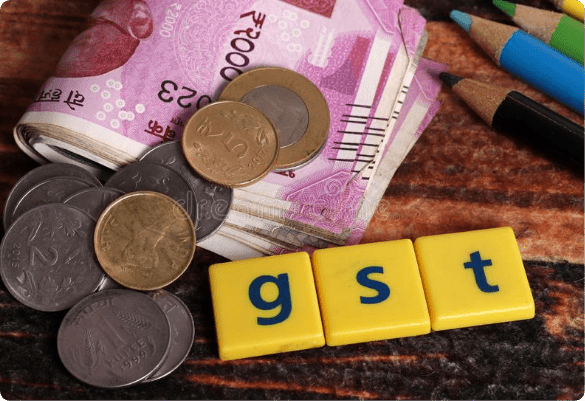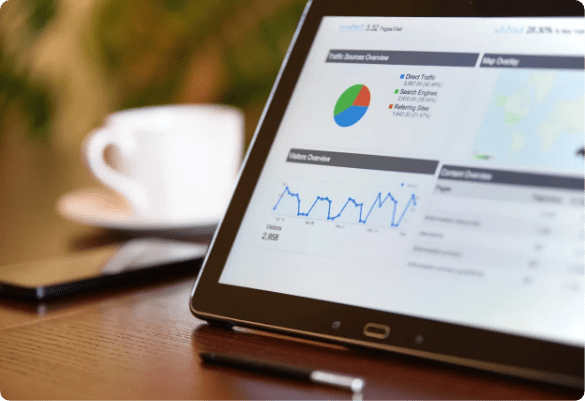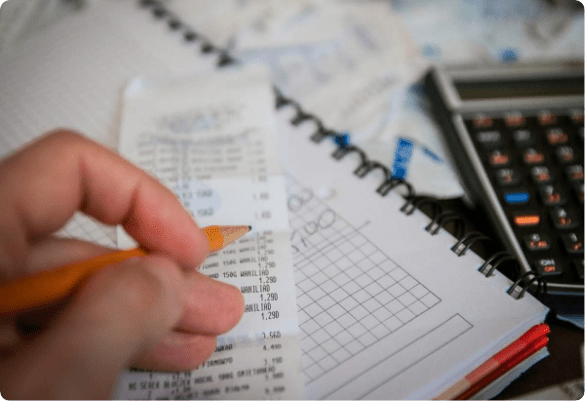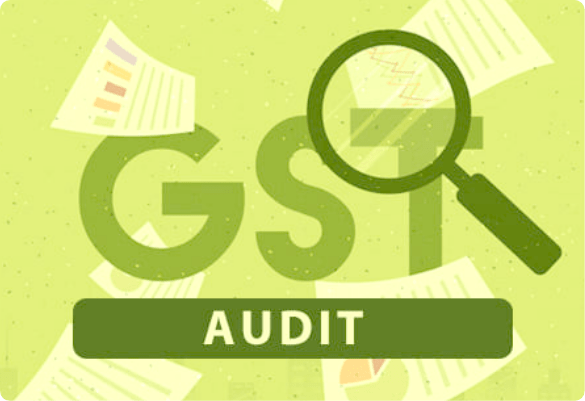GST Input Tax Credit is the most attractive feature of the GST structure, making GST a justified tax. However, claiming 100% eligible Input Tax Credit is a tricky business and sometimes gets complicated due to GST non-compliance by your suppliers.
Claiming eligible ITC becomes important for a smooth flow of credit in your business, and you must take all the possible actions to keep this seamless flow of credit undisturbed. This flow can be disturbed due to any technical difficulties from either your or your supplier’s side.
In this short article, we will be discussing a very important topic regarding the Reversal of your ITC that happens due to the non-compliance of your GST suppliers. But, first, we explain the reversal process of your ineligible ITC with simple examples.
What makes your ITC ineligible?
To categorize your claimed ITC as ‘Eligible’, it is essential to satisfy the following conditions:
Section 16 sub-section 2 of the Central Goods and Services Tax Act of 2017 has put forth certain conditions for claiming eligible Input Tax Credit under GST.
- The taxpayer or business claiming the Input Tax Credit should be in possession of a valid tax invoice or debit note issued by the supplier.
- The taxpayer claiming ITC must have received the goods or services
- The suppliers of the taxpayer have furnished the data of this outward sale in their respective GSTR-1 returns. Also, this has to be reflected in the GSTR-2B auto-generated statement of the taxpayer.
- The supplier should have paid the GST to the government within the stipulated time through an Electronic cash ledger or Credit ledger.
- The supplier files his GSTR-3B return as per Section 39 of the CGST Act.
However, taxpayers should note that merely satisfying these conditions does not guarantee your 100% ITC claim. The government has now come up with the Finance Act of 2022, which introduces some amendments in the ITC claim procedure with effect from the date that is yet to be notified.
We will keep you updated with these amendments in the upcoming articles.
There are many instances when businesses fail to comply with the list of conditions prescribed in the GST law to claim eligible ITC. As a result, they end up claiming ineligible ITC and are supposed to reverse this ineligible ITC amount.
How can the taxpayers do so?
We will look at the ITC reversal process, for example in the further section.
Changes introduced by the Finance Act of 2022
With respect to the procedure and conditions to claim Input Tax Credit, the Finance Act of 2022 has introduced clause (ba) to Section 16(2) of the CGST Act of 2017.
This clause (ba) is nothing but one more condition to be eligible for claiming Input Tax Credit under GST.
Clause (ba) of Section 16(2) of the CGST Act
It states that the Input Tax Credit w.r.t the supply will remain unavailable if it is RESTRICTED as per details provided in the GSTR-2B statement according to Section 38 of the CGST Act.
To simplify this statement, it means that the recipient taxpayer will be allowed to claim only the eligible ITC that is reflected in the GSTR-2B of the recipient.
The CBIC has been re-iterating the fact that to find the eligible Input Tax Credit for a given tax period, GSTR-2B is the definitive and authoritative source.
How is your ITC largely dependent on your supplier?
It is a popular fact that GST defaulting suppliers can harm your ITC claim by blocking your credit. The changes introduced by the Finance Act of 2022 have introduced some provisions to bring this problem under control and allow the recipient taxpayers to claim their eligible Input Tax Credit easily.
Supplier’s side reasons for ineligible ITC
- The supplier is newly registered under the GST structure.
- The supplier is a GST return filing defaulter as per GST laws.
- The supplier fails to comply with the GST rules & laws.
- The supplier pays lesser tax in his GSTR-3B return as compared to the outward tax liability furnished in his GSTR-1 return.
- The supplier claims excess ITC in his GTR-3B as compared to the ITC reflected in his GSTR-2B statement.
If a business is claiming ITC in any of the cases mentioned above, this ITC has to be reversed in their GSTR-3B return.
Reversal of ITC under GST – Meaning & Procedure with example
We have explained the criteria that the businesses need to fulfil for their Input Tax Credit claim to be eligible. But many times, businesses fail to comply and end up claiming ITC.
Is this ITC claim valid?
The answer is NO.
Any claim that violates either of the conditions mentioned in Section 16(2) of the CGST Act shall be classified as an invalid claim, and the ITC will be deemed ineligible ITC.
What if a taxpayer has already claimed ITC for a particular month and later realizes that the claimed ITC is ineligible?
In this case, the taxpayer must REVERSE this ineligible GST Input Tax Credit while their GSTR-3B return filing.
Reversal of ITC – Example
To understand the ITC reversal process quickly, we must understand the following two rules:
- Rule 42 of CGST Act of 2017 (ITC Reversal on Inputs)
- Rule 43 of CGST Act of 2017 (ITC Reversal on Capital Goods)
Let us understand these two GST rules in brief:
Rule 42 – CGST Act
Rule 42 determines the GST Input Tax Credit on the input goods or services and their reversal thereof.
Consider the following example:
Following are the details of the supplies made by ‘Hari Enetrprises’ for the month of May 2022 in the city of Pune, Maharashtra:
| Heads
|
Details |
| Total ITC Available (T) | ₹ 2,30,000 |
| ITC on the input used for personal consumption (T1) | ₹ 10,300 |
| Credit on inputs used to make exempted supplies (T2) | ₹ 19,000 |
| Blocked credits (T3) | ₹ 4,400 |
| ITC on taxable supplies (T4) | ₹ 1,60,000 |
| Aggregate values of exempt supplies (E) | ₹ 3,10,000 |
| The total turnover of the firm (F) | ₹ 35,00,000 |
From the data in the above table, we can infer that:
ITC available as per electronic ledger (C1) = T – (T1+T2+T3);
C1 = 2,30,000 – (10,300+19,000+4,400)
Therefore, C1 = ₹ 1,96,300
On calculating the Common Credit we get:
Common Credit (C2) = C1 – T4
C2 = 1, 96,300-1,60,000 ,
C2 = 36,300
On calculating the ITC towards Exempt supplies from Common Credit:
ITC on exempt supplies from common credit (D1) = (E/F) × C2
D1 = (3,10,000 ÷ 35,00,000) × 36,300
D1 = 3215
ITC available on non-business supplies out of common credit (D2) = 5% of C2
D2 = 5% of 36,300
D2= 1,815
On calculating the remaining eligible ITC,
Balance eligible ITC from the common credit (C3);
C3 = C2 – (D1 + D2)
C3 = 36,300 – (3215 + 1815)
C3 = 31,270
In this example, we can infer that,
Out of the total available Input Credit of ₹ 2, 30,000, only the amount under the header C3 (₹ 31,270) & T4 (₹ 1,60,000) is credited in the electronic ledger.
The amount under the headers D1 (₹ 3,215) & D2 (₹ 1,815) will be reversed.
The total ITC Reversal for ‘Hari Enterprises is ₹ 5,030.
Rule 43 – CGST Act
As per the Rule 43 of the CGST Act of 2017, to reverse the ineligible ITC claimed on the Capital Goods, the following criteria have to be met:
- This ITC claim must be availed on the input of capital goods used for personal or non-business use or used to make any exempted outward supplies.
- This Input credit is related to the supplies besides the ‘exempted supplies’ that also include the ‘nil-rated supplies’.
Let us take an example:
A manufacturing unit ‘Hari Enterprises’ based in Pune, Maharashtra:
This business purchases FOUR equipment, for business purposes as well as for personal consumption.
The business then claims ITC on purchases of all these FOUR units.
Look at the following illustrative data:
| ITC claimed on the purchase of equipment 1 (used exclusively for exempted goods supplies) | ₹ 1,00,000 |
| ITC claimed for equipment 2 (used exclusively for the supply of taxable goods) | ₹ 84, 000 |
| ITC claimed on the purchase of equipment 3 (used for personal/non-business purposes) | ₹50,000; |
| ITC claimed on the purchase of equipment 4 (used for the supply of taxable as well as exempt goods) | ₹ 42,000; |
For this example,
ITC claim for equipment 1 & 3 will be ineligible: (1, 00,000 + 50,000) = ₹ 1, 50,000
ITC claim on equipment 2 will be allowed for ₹ 84, 000
ITC claim on equipment 4 will be eligible under Common Credit for ₹ 42,000.
The rest of the ITC, if claimed on any purchases of any of these capital goods, has to be reversed.
How to reverse ITC in GSTR-3B
Taxpayers must reverse the ineligible ITC in their GSTR-3B return.
We have explained the ITC reversal procedure below:
Table 4(B) of the GSTR-3B form captures the details of the ITC that has to be reversed.
The data has to be filled in two different columns:
- As per Rule 42 and 43 of CGST/SGST rules
- The detail of ITC that has to be reversed based on rules 42 & 43 has to be furnished here. This ITC is claimed on the product or services that are partly used for business and partly for non-business purposes.
- Details of input supplies that include nil-rated or exempted supplies, then ITC reversal on this purchase is required.
- Also, any ITC claimed on the purchase of a capital good which is used for making exempt/nil-rated/taxable supplies must be declared in this column.
- Others
- In this column, taxpayers need to declare any ineligible ITC other than the ones mentioned in the above column.
- Taxpayers must reconcile their books of accounts with their GSTR-2B to identify the eligible and ineligible ITC before furnishing the details in the GSTR-3B return.
Businesses are advised to strictly follow the ITC reconciliation routine using automated reconciliation software like KYSS.
ITC reconciliation is easier with KYSS
Claiming 100% Input Tax Credit is difficult if a business has multiple GST registration under a single PAN.
Hence, businesses are advised to use automated ITC reconciliation platforms like KYSS.
The automated GST filing solutions like KYSS allows you to:
- Hassle-free GST return filing.
- Automated reconciliations to identify errors and file 100% accurate GST returns.
- Claim 100% eligible GST Input Tax Credit and stay away from the ineligible ITC under GST.
- Identify the defaulting GST suppliers by uploading supplier data in bulk.
- Generates a comprehensive report and sends them to the concerned stakeholders.
- Automated notifications to the identified GST defaulting supplier.
- Authentic GST data – directly fetched from the GSTN portal.
- Frequent follow-ups – The automated tracker works on data-driven insights. Hence, for a non-responsive supplier, regular follow-ups will be scheduled.
In conclusion
This comprehensive article has discussed the basics of Input Tax Credit reversals and all the GST law provisions around this process.
It’s essential that businesses use an automated reconciliation and GST return filing solution like KYSS to avoid ambiguity in the GST return filings. You do not have to worry about the ineligible ITC claims.
Claiming of ineligible ITC can bring your business under the GST department’s scrutiny and may also invite show-cause notice from the GST department.
In the upcoming article, we will help the readers understand all the Input Tax Credit components in detail.
Stay tuned with KYSS for more awesome content on GST!





